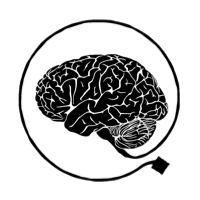Nick Shea, Institute of Philosophy, University of London
I was delighted to be asked to write a commentary on the first of Ruth Millikan’s Brains Blog posts on her oeuvre. Having made important and influential contributions to many areas of philosophy of mind and language, I am especially pleased that she decided to start her series of posts with her work relating to concepts. My own thinking about concepts has been deeply influenced by her first concepts book, On Clear and Confused Ideas (2000), as well as by many discussions over the years in which Ruth has generously and patiently explained her views on this topic.
Millikan decisively rejects two central commitments of a standard view of concepts (one might once have said ‘the’ standard view of concepts). To emphasise this difference, her 2017 book introduced the terminology of unicepts. A unicept is a person’s store of information characterising some subject matter. The new term marks, first, that the reference of a unicept is not fixed by whether things in the world fit with the ways they are characterised: by satisfying a definition, or matching a prototype, etc. Second, unicepts are not shared between individuals. Different people have different stores of information. We should theorise about properties like reference at the level of an individual’s unicept, rather than something which is shared.
People clearly have different and often idiosyncratic ways of conceiving of things in the world, but it does not follow that we are all thinking about different things. Two people with very different conceptions can be thinking about exactly the same objects, properties and kinds, as Millikan discussion of Helen Keller brings out. One part of the story here is that Millikan leans heavily on a metaphysical picture in which features of the world occur together in natural clusters, ‘clots’ or ‘clumps’. Showing that this idea of real kinds covers individuals, as well as many natural kinds and stuffs, was one of the important contributions of the 2000 book. The other part of the story is an appeal to a teleosemantic theory to show how unicepts end up referring to these kinds. Teleosemantics was left in the wings in 2000. The 2017 books brings these two parts of the story together into a satisfying whole.
A key question is whether this theory works in its application to unicepts: whether Millikan can made good on the claim that a unicept refers to whatever it has been collecting information about. There is an empirical question about whether there are psychological mechanisms that check for coherence in the way Millikan supposes (ch. 5). The claim is intuitively plausible but has been little-investigated empirically. There is also a philosophical question about whether testing for coherence can establish sufficiently determinate reference. The rich ontology of real kinds helps here, but it is not clear that it can be relied on for all the very many things we can think about: an evanescent musical genre, say, or a particular shade of colour. Appealing to mechanisms that set targets for unicepts may help (ch. 5), but at the potential cost of introducing an element of descriptivism. While Millikan’s general theory of content from Language, Thought and Other Biological Categories (1984) has rightly received much philosophical attention, there is a rich seam of further work to be done on the application of her teleosemantic ideas in the 2017 concepts book.
Finally, I should explain why I call this a ‘concepts’ book, despite Millikan’s insistence that she is writing about unicepts, not concepts. The subject matter is the same range of phenomena that are addressed by other leading theorists of concepts, from both philosophy and psychology. Millikan’s preferred reading is that we should replace theorising about concepts with theorising about unicepts. An alternative reading is that Millikan has shown that we need to revise the standard conception of what concepts are like and replace it with her own account. It is a delicious irony that, according to Millikan’s own theory, her store of information about unicepts and a rival theorist’s store of information about concepts probably have the very same referent. They both get onto the distinctive clot or clump of properties in human psychology that Millikan’s theory has done so much to elucidate.
